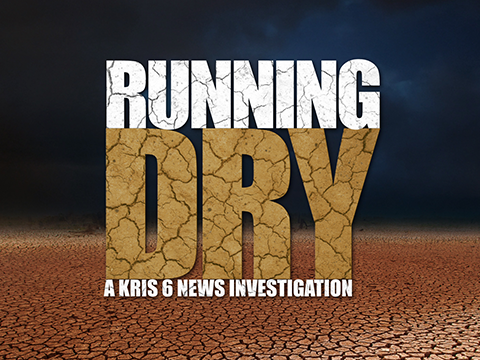CORPUS CHRISTI — “I’ve worked on several, maybe ten bridges,” Francisco Aguiniga said. “I’m a professor at Texas A&M-Kingsville in the department of civil and structural engineering.”
KRIS 6 News asked Aguiniga to put the design flaws with the new Harbor Bridge in layman’s terms.
A project put in limbo since a report by a third party engineer discovered five major safety concerns.
TxDOT gave the new bridge’s contractor, Flat Iron/Dragados LLC, 15 days to address them.
The new Harbor Bridge is being designed and constructed at the same time.
“That can be a factor, okay, 'I caught something in the design, but at this point construction's already behind us right there.' (It) already started in that area,” he said.
“Like when you go to the doctor. Like ‘hey, I gotta take some X-Rays.’ ‘Okay, can you see that? Well, I’m not 100 percent sure. Let me take a biopsy and sample.’ And sometimes they need to go in," Aguiniga said. "It’s somewhat similar in engineering. The only way to find out is when you are already there.”
The first default in design was listed as inadequate capacity of the pylon drilled shafts.
“The main bridge has those cable stays and two big towers,” Aguiniga said. “Those are called the pylons.”
He said the pylons have big columns with two legs at the bottom which are supported by a foundation or a big slab.
“Underneath that big, old slab are a series of shafts that are drilled and filled up with concrete and steel,” Aguiniga said. “Some of those drill shafts on the edge are experiencing, in their analysis, greater forces than they can handle.”
The forces Aguiniga was talking about are the Coastal Bend winds. If they’re strong enough, they can cause those columns to sink like a stick in mud.
The second safety concern listed on the report was deficiencies in footing caps that led IBT to report that the bridge would collapse under certain load conditions.
“It’s like having a whole bunch of toothpicks and then you grip them altogether,” Aguiniga said.
“It makes it easier to transfer into some kind of weight and distribute and spread it underneath, to all of the elements that are underneath it.”
The third safety concern was delta frame design defects, primarily related to the connections between the delta frames and adjacent precast box units.
“You can increase the strength of those beams by a compression force, compressing those things together and that could be done by pre-stressing,” he said. “You make a cage out of steel and put some forms around it and pore the concrete. You pour the concrete, let it harden and once it hardens, cut the force and the wires try to shrink and they compress the beam. Kind of like a spring.”
Aguinia said the report states the building code calls for this project to have non-compressed steel.
“Apparently, it didn’t have all that was needed for that connection and it was relying more on the pre-stretching mechanism,” he said.
The fourth safety concern listed was significant uplift at the intermediate piers.
“Some of the bridge can sort of lift up from some of the supports,” Aguiniga said.
And the last safety concern listed was excessive torsion and other stresses related to crane placement during construction.
“When cranes are located in a certain position, the different segments are being added together and apparently that can cause also some twisting” he said. “That’s torsion of the structure.”




